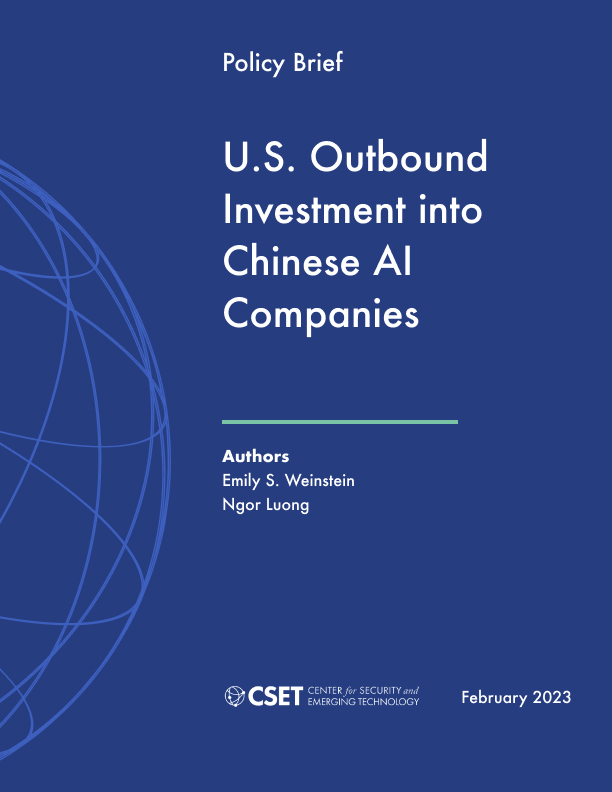Executive Summary
Policymakers in the United States and abroad are increasingly concerned about the national security implications associated with outbound investment, and some in Washington are advocating for a potential outbound investment security review or regime to address the national security risks associated with outgoing U.S. capital. This policy brief analyzes data from Crunchbase on U.S. outbound investment into Chinese artificial intelligence companies between 2015 and 2021 to better understand the scope and nature of these transactions. This report aims to identify: 1) the main U.S. investors active in the Chinese AI market, and 2) the set of AI companies in China that benefitted from U.S. capital during this period. It also lays out potential implications and next steps for U.S. policy. Our key findings include the following:
- Chinese investors remain the dominant investors in Chinese AI companies. Between 2015 and 2021, at least 71 percent of the transaction value and 92 percent of the investment transactions with no U.S. participation came from Chinese investors alone.
- Based on available data in Crunchbase, between 2015 and 2021, 167 U.S. investors participated in 401 investment transactions—or 17 percent of 2,299 global investment transactions—into Chinese AI companies.
- Collectively, observed transactions involving U.S. investors totaled $40.2 billion invested into 251 Chinese AI companies, which accounts for 37 percent of the $110 billion raised by all Chinese AI companies. However, we do not know the exact portion of the $40.2 billion that came from U.S. investors.
- Ninety-one percent of the observed U.S. investment transactions into Chinese AI companies during the covered time period came at venture capital (VC) investment stages, such as angel, seed, and pre-seed.
While Crunchbase data suggests that U.S. outbound investment into Chinese AI companies is limited, such financial activity, commercial linkages, and the tacit expertise that transfers from U.S.-based funders to target companies in China’s booming AI ecosystem carry implications that extend beyond the business sector. Earlier stage VC investments in particular can provide intangible benefits beyond capital, including mentorship and coaching, name recognition, and networking opportunities. As such, U.S. outbound investment in Chinese technology, and particularly AI, merits additional attention and tracking.
The U.S. government is not currently in a position to effectively monitor, measure, or regulate outbound investment flows to Chinese AI companies. This, combined with the highly complex nature of these transactions, means policymakers should attain a full understanding of the nature and scope of U.S. financial and technological support to Chinese AI companies before proceeding to address any concerns, and doing so cautiously. To this end, we provide a set of recommendations:
1. Identify clear policy objectives for any potential outbound investment security review or regime. There is a sufficient amount of U.S. outbound investment into Chinese AI companies to warrant further investigation with clearly scoped objectives.
2. Devise a pilot program for collecting data on U.S. outbound investment into China. Revise disclosure requirements for U.S.-based funds, as well as disclosure requirements for U.S. firms investing in Chinese companies, particularly those in sectors deemed critical to national security.
3. The U.S. Department of Treasury, in conjunction with the interagency, should expand and revise the scope of the Non-SDN Chinese Military-Industrial Complex Companies List. The expansion could include privately-held Chinese companies that can attract VC investments, as well as sectors critical to national security beyond defense/materiel and surveillance.
4. Create a mechanism to prevent U.S. investment into Chinese companies on the U.S. Department of Commerce’s Entity List. This could require divestiture from Chinese companies on the Entity List and restrict future investment in listed entities.
*This report was updated on February 16, 2023, in light of new information provided to the authors by Qualcomm.
